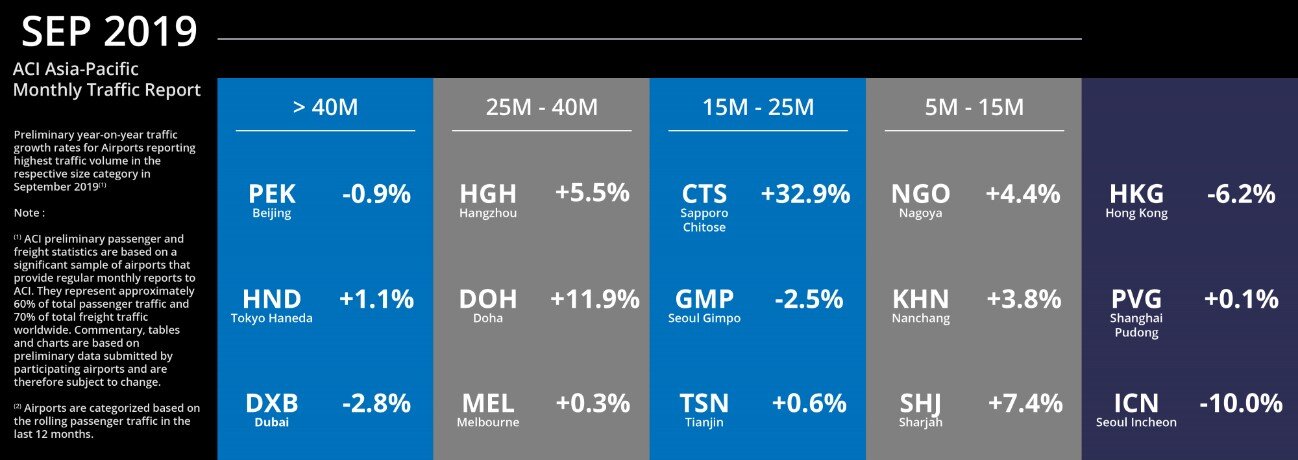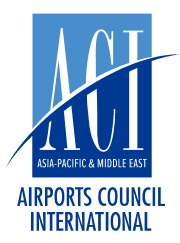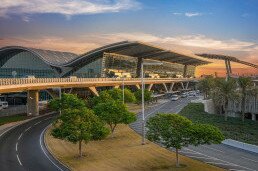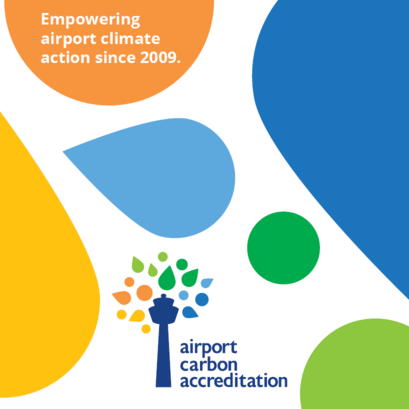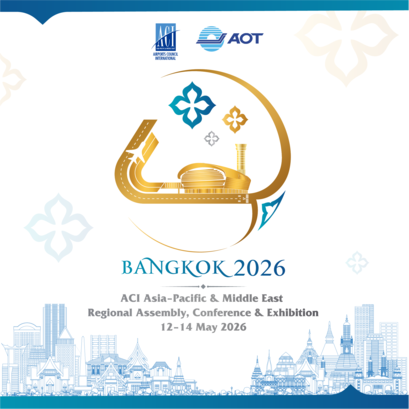
Sep 2019: Passengers up 2.0% in Asia-Pacific and 2.2% in the Middle East
- 06 Dec 2019
Passenger traffic in Asia-Pacific and the Middle East recorded growth in September at +2.0% and +2.2% respectively.
In China, both the international and domestic sectors showed signs of improvements, likely benefiting from an increase in vacation travels during public holidays. Passenger traffic at Hong Kong (HKG) suffered a decline of -12.7% and continued to be adversely affected by civil unrest and softening in demand. Among major airports in China, Shenzhen (SZX) and Guangzhou (CAN) generated the highest growth at +13.4% and +8.5% respectively.
The overall passenger traffic growth in India was stagnant and demand in both international and domestic segments showed signs of slowing. The three airports with the most passenger volume increase from last year were: Delhi (DEL) +1.1%, Kolkata (CCU) +2.5% and Cochin (COK) +4.4%.
Elsewhere in Asia-Pacific, Osaka Kansai (KIX) and Sapporo New Chitose (CTS) experienced substantial growth of +102.8% and +32.9% respectively. The airports benefited from a lower base last year, when both were impacted by typhoons and earthquakes. The recovery was driven mainly by passengers from China but partially offset by lower demand due to diplomatic tensions between Japan and South Korea.
In the Middle East, passenger traffic grew at +2.2% amid ongoing geopolitical tensions. Nonetheless, mixed results were recorded among major airports: Dubai (DXB) -2.8%, Doha (DOH) +11.9% and Jeddah (JED) +2.8%.
Overall, year to date, passenger traffic in Asia-Pacific and the Middle East grew +1.7% and +2.4% respectively. Although passenger traffic of major markets such as China, India and the United Arab Emirates improved in the second quarter, the pace of growth eased in the third quarter. Uncertain global economic environment and geopolitical tensions have negatively affected passenger traffic in both regions.
Air freight remained weak, impacted by the continued slowdown across Asian export markets. Asia-Pacific and the Middle East declined at -3.9% and -6.7% respectively. Hong Kong (HKG), the largest air freight hub in the world, declined at -6.2%, showing a narrower decline from last month. Among major air freight hubs, Shenzhen (SZX) and Guangzhou (CAN) managed to generate positive growth at +12.0% and +4.6%.
Overall air freight traffic declined in the first nine months, with Asia-Pacific at -5.8% and the Middle East at -3.0%, amid ongoing trade tensions between the United States and China, which weakened manufacturing activities and exports in both regions.
